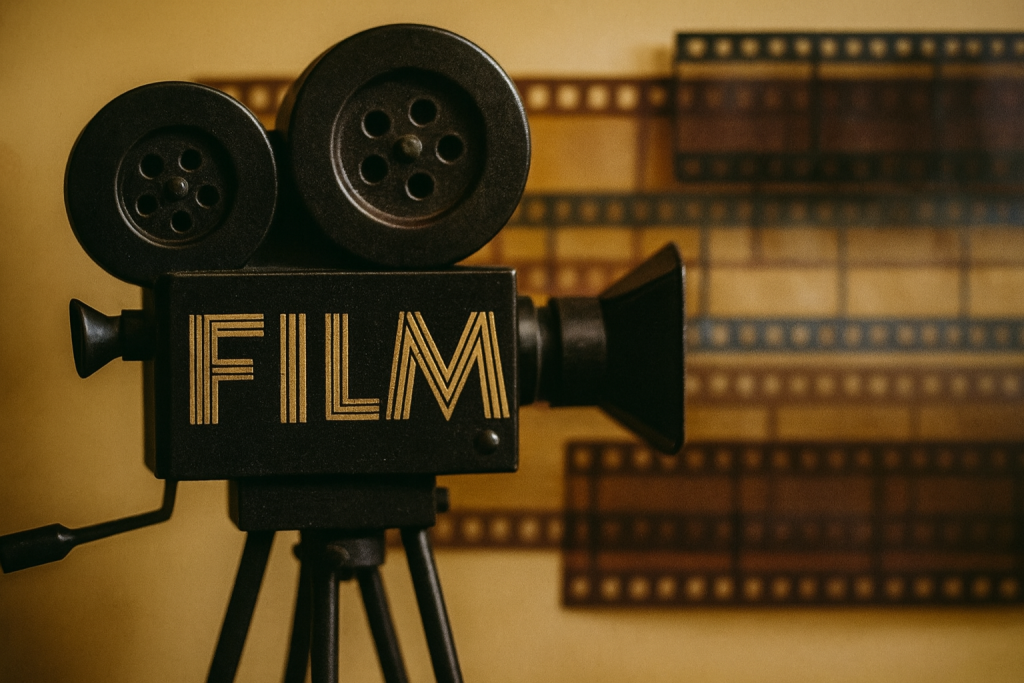
Since the early Hollywood days, people have been easily influenced by and receptive to the ideas portrayed by the films of their time. Film had and continues to have influence over small-scale things like fashion trends and consumer behavior as well as large-scale issues like racial and geographical stereotypes. Short term effects of film include fast fashion trends like the rising revival of 1950s styles and the classic leather jacket with the release of Grease in 1978 or the sudden popularity of flare pants and disco-inspired clothing with the release of Saturday Night Fever in 1977.
Old films have even had the power of creating a falsified depiction of a whole region. From the 1930’s to 1960’s, western-inspired movies grew in popularity like the Magnificent Seven, High Noon, and Red River. In these films the West is portrayed as an isolated frontier dotted with cowboys, horses, heroic gunmen, and tumbleweed. Films have the power to shape and perpetuate cultural myths and perceptions, such as the idealized image of the American West. The Classic Hollywood era, or the Golden Age of Hollywood, started in the early 1900’s and was targeted to white and upper class audiences. Since the beginning of the production of films, undertones of racism were blatantly apparent. An example of this can be seen in the 1933 film, King Kong, specifically in the portrayal of the island natives, who are depicted wearing feathers
and dancing around huts—an image steeped in colonialist stereotypes. Representations like these further reinforce harmful stigmas surrounding specific races and groups of people. In The Oxford Guide to Film Studies, Robyn Wiegman, Professor at Duke University writes, “It is by the figure of this condensation that an image becomes a stereotype; its racialization is achieved by an implicit or explicit moral assessment concerning the group’s inherent ‘essence’”. Perpetuated stereotypes are a form of representation in film that present non-while culture and characters as static and one-dimensional. Furthermore, one of the most striking observations made by critics is that certain groups, when confined to preconceived notions in film, see their portrayal align with the historical and political conversation surrounding their race at that point in time.
A clear example of this is seen through the depiction of native americans as violent or savage in films such as The Massacre (1912) and Buffalo Bill’s Wild West Shows of the nineteenth-century. Although racism and stereotypes have become less apparent throughout the years, the trend of linking the social situation of a race to how they are portrayed in films continues. An example of this can be seen in Gloria from Modern People, in which her character is represented as a loud, thick-accented, hot-tempered latina. To this day, there is a prominent undercurrent of specific races being depicted in a certain light, as seen in Gloria and many other characters. Oftentimes, an individual is automatically given a set of characteristics that match with their appearance, based on the common stereotypes assigned to their race. While shallow portrayals still exist in film, there has been a noticeable shift toward more authentic storytelling. In recent years, filmmakers have created movies and characters that go against these misleading stereotypes, working to dismantle them and instead give a real, raw representation of differing groups. Spectacular director, Ryan Coogler, directed a popular example of this: Black Panther. The film significantly challenges the Western stereotypes of sub-Saharan Africa. It broke away from the stereotype that all of Africa is impoverished and corrupt, instead representing Africa in a nuanced, multi-dimensional way through their depiction of a fictional nation. The film also recognizes African Indigenous Culture in a positive way, showcasing traditions and leadership, as well as emphasizing the continent’s diversity and potential. Films like Blank Panther demonstrate the power that movies have to challenge and dismantle entrenched stereotypes.
Another film, directed by Jon M. Chu, worked to fight against the presumed stereotypes surrounding people of Asian descent. The significant imbalance in representation of people coming from an Asian background in film did nothing for the preconceived notions of Asians as the funny sidekick, kung-fu master, or any other commonly portrayed stereotype in film. Chu created “Crazy Rich Asians”, a hit romantic comedy released in 2018, the movie worked to break through these assumed notions by portraying the underrepresented group as deeply human with hopes, dreams, and a longing for love, creating a truer representation of Asians in the real world. The film was well received, now being the highest-grossing romantic comedy in the last decade, and continues to be watched and loved globally.
Films have the ability to both build up barriers between different groups of people as well as break them back down. For the future of the film industry, it is important to have diverse storytellers, producers, and directors to produce movies that ignore outdated views and stereotypes and instead foster inclusivity and depict differing groups. While the film industry has come a long way, as more directors of color, latinos, and other minority groups are rising to take charge, significant challenges remain. The key to further progress lies in the efforts of having diverse, opened minded individuals lead the film industry who work to break barriers and reject generalizations.
By Isabella Noguera